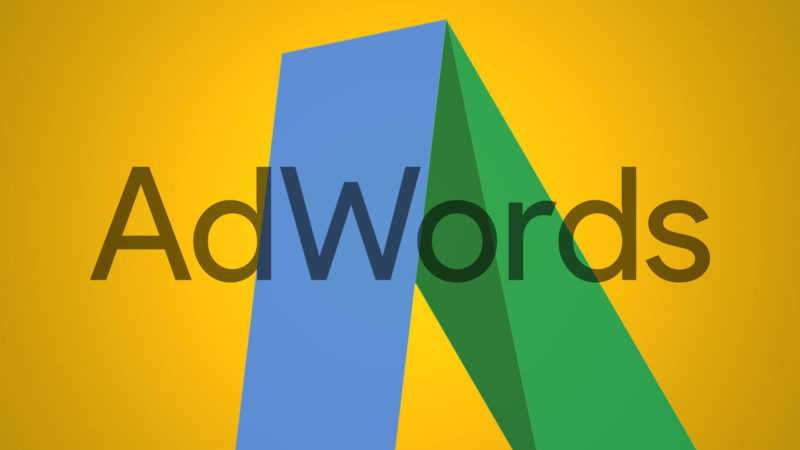5 steps to success for low-conversion-volume accounts in AdWords
You may be stressing over how to make improvements to your paid search campaigns when data is scarce, but columnist Anna Shirley shows how a low-volume account can be a great opportunity to be more creative and inventive.

Imagine this: you’re happily working away in your busy AdWords accounts, looking at hundreds, or maybe even thousands of conversions a week. Pretty simple, right?!
But then someone throws a curveball at you: an account that only generates a few conversions a month. Goodbye, easy optimization! Hello, outside-the-box thinking.
So, what’s tough about it?
The obvious issue is that you have less data to work with, meaning optimization is more difficult. It’s also harder to measure performance and growth over time. And what about testing? We all know that this is the bread and butter of any good PPC manager. Yet when you get little in the way of conversions, it’s not so simple!
Now, you may be feeling frustrated, thinking that there is nothing you can do with low-volume accounts and that they’re forever destined to have minimal changes and little growth. Think again! In this article, I’m going to give you some steps to success when it comes to optimizing low-conversion-volume accounts in AdWords, addressing Goals, Conversions, Audiences, Optimization and Testing.
1. Define your goals
The first step to success is recognizing the need to be consistent in your approach and focus. This certainly applies to your campaign goals.
Now, as we all know, the most common goals will be related to conversion metrics (CPA, ROAS, Revenue and so on). However, with a low volume of conversions, we won’t see this as the most valuable metric to optimize to on a day-to-day basis. Instead, look at wider objectives that fall into the two following areas:
- Brand awareness. If your main goal is to increase brand awareness, look at how much quality traffic you are attracting to your website. Your key metrics here will be Clicks and CTR. By focusing on nailing your audience strategy and ad copy (more on this later), you can monitor any improvements here.
- Site engagement. Another way to optimize toward a specific goal would be to use site engagement as a way to gauge traffic quality. Google Analytics is your best bet here, allowing you to measure performance and optimize by focusing on the various engagement metrics available (see screen shot below). Even better, these metrics are available down to keyword level! This is a more sophisticated way of measuring user quality than just looking at AdWords metrics. For example, if your highest-traffic keywords have a 90 percent bounce rate, landing page improvements or some in-depth search query reports may be needed.
2. Consider alternative ways to track conversions
Okay, so you’ve set yourself some goals that relate to brand awareness and site engagement. Now, what about ways to be more creative with what you do actually track as a conversion?
- Offline conversions. One of the reasons you may have a low volume of visible conversions in the AdWords interface could be that the majority of conversions happen offline (or in a place that isn’t trackable via standard AdWords conversion tracking). If this is the case, it’s possible to track offline conversions through GCLID imports from CRMs like SalesForce.
- Telephone tracking. There are various ways to track telephone calls and import them into the AdWords interface. One of the best ways is through Google’s free call tracking tag that allows you to track users who call you after clicking through a PPC ad.
- Google Analytics goals. You could also set up Goals in Google Analytics and import them into AdWords to track softer conversions like time on site, pages per session and so on. These may not be as valuable as a direct conversion but will give you much more data to play with, helping you discern where your more valuable and interested users are coming from.
3. Use campaign-level audience lists
What about audience targeting? I hear you ask.
If you’ve ever tried to have a granular Remarketing Lists for Search Ads (RLSA) structure for your lower-volume accounts through applying multiple lists of different time durations and segments across your account, I’m sure you came across a similar problem. You decide to start applying bid adjustments across remarketing audiences, but you have no significant data to work with, and traffic is spread so thinly across your audiences that it’s impossible to rely on the data you’re seeing.
Luckily, Google has released a feature that I’m sure had been requested thousands of times: Campaign-level audience lists. For those of you with low-volume accounts, this is a life-saver, as you can now set up audience lists with catch-all long duration (max. 540 days) at campaign level, rather than at ad group level.
You may have very granular structures for your larger accounts (e.g., “Visited but not converted in the last 24 hours,” or “spent 2 minutes on site in the last 30 days” type lists), but this won’t fly with low-volume accounts. For a start, you need at least 1,000 users in a list to target them in the first place.
Once you have audiences applied at campaign level, you may need to wait awhile to see meaningful data, but be patient. Eventually, you’ll start to see clear trends (e.g., Do returning visitors have a better CTR? Are they more likely to perform softer conversions?), and you can then begin to apply calculated bid adjustments on these lists.
4. Use creative testing methods
I’m not going to lie here — everything is trickier with a low-conversion-volume account, but testing is especially difficult. Even on a high-volume account, I would expect a test to run for at least a month before generating significant results. Now imagine this on an account with only a handful of conversions each month and generally quite low traffic. I can feel myself aging just thinking about it!
You have a few different options here to make testing possible and slightly more manageable for those tricky low-volume accounts:
- Controlled testing. The most obvious answer here would be to accept that a test may need to run for a long time before reaching significance.
- Sequential testing. Another option that is less scientific/foolproof than controlled testing would be to run sequential tests (i.e., a control group for X amount of time and an experiment group after this for the same time period). Before anyone panics about this unscientific approach, I know that it’s not comparing like-for-like, and you will need to keep this in mind when analyzing results. However, if you are struggling for volume, this could be a good way to make some headway. Set your groups to the same time period, and make sure you’re not expecting any large changes in traffic or demand to avoid skewed results.
5. Optimize based on analytics data
I mentioned this earlier in the article, but Google Analytics will be a great support here. As well as the basic metrics available in the AdWords interface, you can use Google Analytics to access a huge range of data on your website’s users that you could apply to your PPC campaigns, too.
For low-volume accounts, it can be nigh on impossible to collect enough valuable data to apply ad scheduling, location bid adjustments, or even device bid adjustments. Rather than ignoring these or basing your decisions on an unreliable amount of data, why not hop back into Google Analytics and use some of the custom reporting metrics available there?
You can look at custom reports for all site visitors by hour of day or day of week, and then use the learnings to apply to your AdWords campaigns. For example, all site visitors convert best on a Tuesday morning, so let’s add an increased bid adjustment here in AdWords to capture these valuable users.
Again, it’s a little bit like sequential testing — it’s not totally scientific, but it can be a great way to optimize your account when you have low traffic or conversion volumes from AdWords itself.
Final thoughts
I’ll just leave you with a few final thoughts. Do try to be consistent in your approach to optimization and measurement for your lower volume accounts. It will be too overwhelming to pick and choose metrics to focus on at random, so even if it’s a smaller target (X% increase in CTR, or an improvement in a site engagement metric like bounce rate), this will help provide you with some clear focal points.
By its very nature, PPC offers a clear and transparent way to see where you’re seeing the best return for your business. For low-conversion-volume accounts, use your instincts to make sensible and logical assumptions, but be sure you reassess these regularly.
Contributing authors are invited to create content for Search Engine Land and are chosen for their expertise and contribution to the search community. Our contributors work under the oversight of the editorial staff and contributions are checked for quality and relevance to our readers. The opinions they express are their own.
Related stories
New on Search Engine Land




